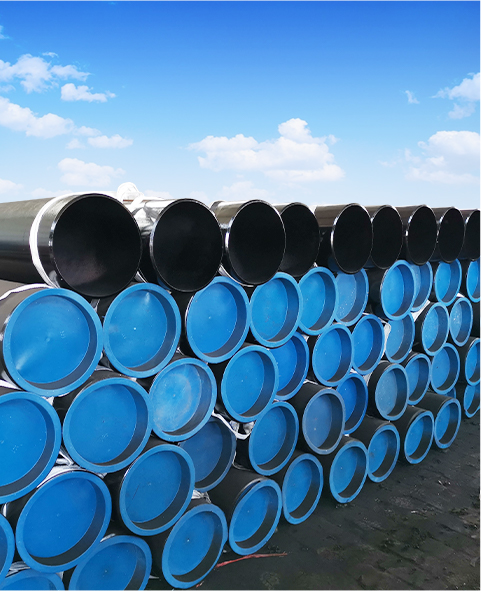-
Cangzhou Yulong Steel Co., Ltd.
-
Phone:
+86 13303177267 -
Email:
admin@ylsteelfittings.com
- English
- Arabic
- Italian
- Spanish
- Portuguese
- German
- kazakh
- Persian
- Greek
- French
- Russian
- Polish
- Thai
- Indonesian
- Vietnamese
- Zulu
- Korean
- Uzbek
- Hindi
- Serbian
- Malay
- Ukrainian
- Gujarati
- Haitian Creole
- hausa
- hawaiian
- Hebrew
- Miao
- Hungarian
- Icelandic
- igbo
- irish
- Japanese
- Javanese
- Kannada
- Khmer
- Rwandese
- Afrikaans
- Albanian
- Amharic
- Armenian
- Azerbaijani
- Basque
- Belarusian
- Bengali
- Bosnian
- Bulgarian
- Catalan
- Cebuano
- China
- China (Taiwan)
- Corsican
- Croatian
- Czech
- Danish
- Esperanto
- Estonian
- Finnish
- Frisian
- Galician
- Georgian
- Kurdish
- Kyrgyz
- Lao
- Latin
- Latvian
- Lithuanian
- Luxembourgish
- Macedonian
- Malgashi
- Malayalam
- Maltese
- Maori
- Marathi
- Mongolian
- Myanmar
- Nepali
- Norwegian
- Norwegian
- Occitan
- Pashto
- Dutch
- Punjabi
- Romanian
- Samoan
- Scottish Gaelic
- Sesotho
- Shona
- Sindhi
- Sinhala
- Slovak
- Slovenian
- Somali
- Sundanese
- Swahili
- Swedish
- Tagalog
- Tajik
- Tamil
- Tatar
- Telugu
- Turkish
- Turkmen
- Urdu
- Uighur
- Welsh
- Bantu
- Yiddish
- Yoruba

Nov . 08, 2024 13:25 Back to list
Understanding DIN PN 16 Flanges Specifications and Applications in Various Industries
Understanding the Flange DIN PN 16 A Comprehensive Overview
Flanges play a crucial role in various industrial applications, serving as connecting components that enable the assembly of pipes, valves, pumps, and other equipment. Among the many standards that govern the design and manufacture of these vital components, the DIN (Deutsches Institut für Normung) PN 16 flange is particularly significant. This article explores the characteristics, applications, and benefits of the DIN PN 16 flange.
What is DIN PN 16?
DIN PN 16 refers to flanges that comply with the German Institute for Standardization's specifications, specifically designed for a nominal pressure rating of 16 bars. In this context, PN stands for Pressure Nominal, and the number represents the maximum allowable pressure that the flange can withstand at a specified temperature. DIN PN 16 flanges are widely recognized in various engineering sectors, offering a robust solution for securing piping systems under moderate pressure conditions.
The DIN standard encompasses various dimensions and materials, ensuring that flanges can be manufactured to suit different requirements. Typical materials used in the production of DIN PN 16 flanges include carbon steel, stainless steel, and ductile iron, each selected based on the intended application and environmental conditions.
Characteristics of DIN PN 16 Flanges
One of the key attributes of DIN PN 16 flanges is their design, which is governed by specific dimensions and tolerances. Generally, these flanges feature a flat face, raised face, or ring joint, depending on the application. The most common shapes include circle and rectangle, with sized diameters ranging from nominal DN 10 (10 mm) to DN 600 (600 mm).
The thickness of the flange and the bolt hole arrangement are also detailed in the relevant DIN standards, ensuring compatibility with other components in the piping system. It is essential for engineers and designers to adhere to these specifications to maintain pressure integrity and prevent leaks in the system.
Applications of DIN PN 16 Flanges
DIN PN 16 flanges are utilized in a wide range of industries, including chemical processing, water treatment, power generation, and HVAC systems. Their versatility makes them suitable for both general and specialized applications.
In the chemical industry, for instance, these flanges are employed in pipelines for the transport of various liquids and gases, where sealing and pressure integrity are critical. The compatibility of the flange material with different chemicals is a significant consideration, ensuring that there is no corrosion or degradation over time.
flange din pn 16

In HVAC systems, DIN PN 16 flanges are frequently used to connect ductwork, pumps, and valves. Their ability to handle pressure fluctuations and thermal expansion makes them ideal for both heating and cooling applications.
Advantages of Using DIN PN 16 Flanges
The use of DIN PN 16 flanges offers several benefits
1. Standardization The DIN standard ensures consistency in flange manufacturing, which simplifies the procurement process and helps in maintaining interoperability across different systems.
2. Strength and Durability Made from high-quality materials, DIN PN 16 flanges are designed to endure significant pressure, making them reliable components in critical applications.
3. Ease of Installation The bolt-hole patterns are standardized, allowing for straightforward installation and maintenance procedures. This reduces the time and labor costs associated with assembly.
4. Versatility With various sizes and materials available, DIN PN 16 flanges can be customized to meet specific requirements, making them a flexible choice for engineers.
5. Cost-Effectiveness Due to their widespread use and standardization, DIN PN 16 flanges are often more cost-effective than custom flanges, offering competitive pricing in the market.
Conclusion
In conclusion, DIN PN 16 flanges are critical components in a variety of industrial applications, providing a reliable means of connecting piping systems under moderate pressure conditions. Their adherence to rigorous standards ensures a level of quality and performance that engineers can trust. By understanding the characteristics, applications, and advantages of these flanges, professionals in the field can make informed decisions that contribute to the safety and efficiency of their projects. As industries continue to evolve, the importance of reliable and standardized components like the DIN PN 16 flange will undeniably remain a cornerstone of effective engineering practices.
Latest news
-
ANSI 150P SS304 SO FLANGE
NewsFeb.14,2025
-
ASTM A333GR6 STEEL PIPE
NewsJan.20,2025
-
ANSI B16.5 WELDING NECK FLANGE
NewsJan.15,2026
-
ANSI B16.5 SLIP-ON FLANGE
NewsApr.19,2024
-
SABS 1123 FLANGE
NewsJan.15,2025
-
DIN86044 PLATE FLANGE
NewsApr.19,2024
-
DIN2527 BLIND FLANGE
NewsApr.12,2024
-
JIS B2311 Butt-Welding Fittings LR/SR 45°/90° /180°Seamless/Weld
NewsApr.23,2024











